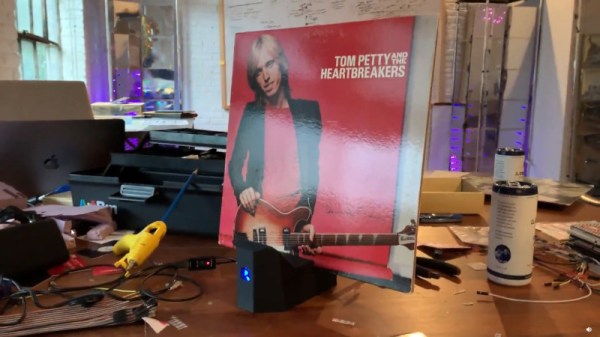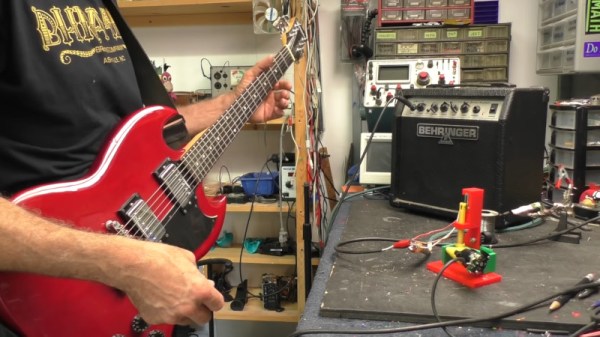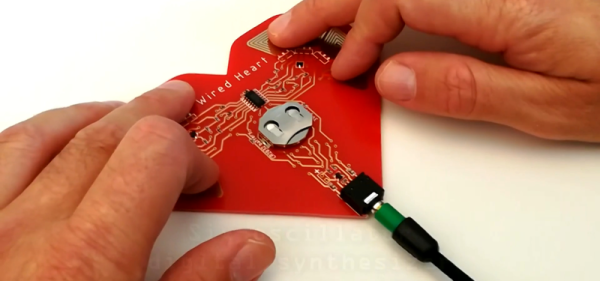Liner notes? Passé. In Berlin, the release of a special edition synth-wave record came with an accompanying experimental synthesizer called Wired Heart.
At the core of this adorable heart-shaped synth, designed by music technology enthusiast [tobi tubbutec], is the classic 74HCT14 chip with six Schmitt trigger oscillators. The bright red PCB has eight gold touch and humidity sensing pads that activate and modulate these oscillators. As well as changing the sounds by playing with pressure and conductive liquids you can use the six sets of header pins on board to plug in your own components for noisy experimentation. Wired Heart ships with LEDs, photoresistors and a potentiometer, but we’ve also plugged our own DIY fabric pressure sensors into this synth to make some excellent electronic sounds.
In the Hackaday.io post linked above, [tobi tubbutec] walks us through a number of the circuit design decisions he made while prototyping his “cardiotronic human-touch hexoscillatric stereo esoteric snythespacer”. We enjoyed his creative and sometimes unconventional designs, from his inclusion of non-functioning traces for aesthetic reasons to his chosen method of hard syncing — injecting a small pulse of one oscillator into the other. If you want to examine his layout in more detail, [tobi tubbutec] has helpfully included the KiCad schematic file in his write up.
This adorable, hackable synth caught our eye at this year’s SuperBooth — an annual indie electronic music conference in Berlin that’s well worth checking out if odd noises and handmade electronics are your thing — but it’s recently been listed on Tindie too. To listen to the upbeat synth-wave record Wired Heart originally shipped with, visit the artist Hyboid’s bandcamp.
If you’re interested in experimental musical instruments and synthy chip tune you’ll also love [jarek319]’s Sega Genesis synthesiser.
Check out a demo of the Wired Heart synth in the video after the break.
Continue reading “Hack My Wired Heart” →

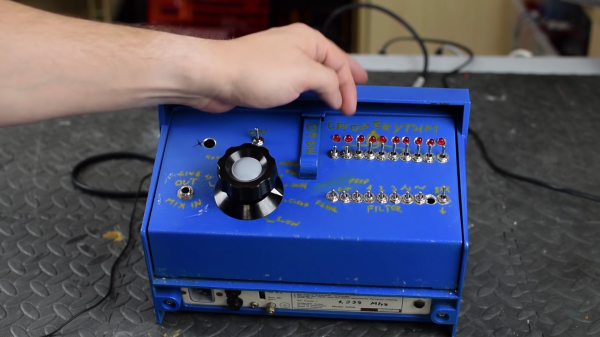
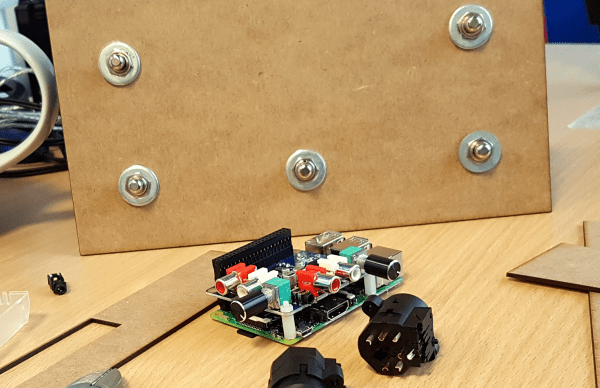
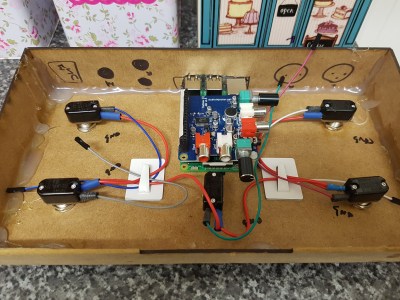 At the center of the box is a Raspberry Pi with an AudioInjector stereo sound card. The card takes care of stereo in and out, and passing the signal to the Pi. The software is Modep, an open source audio processor that allows the setup of a chain of digital effects plugins to be run on the Pi. After finding some foot switches, [Craig] connected them to an Arduino Pro Micro which he set up as a MIDI device that sends MIDI messages to the Modep software running on the Pi.
At the center of the box is a Raspberry Pi with an AudioInjector stereo sound card. The card takes care of stereo in and out, and passing the signal to the Pi. The software is Modep, an open source audio processor that allows the setup of a chain of digital effects plugins to be run on the Pi. After finding some foot switches, [Craig] connected them to an Arduino Pro Micro which he set up as a MIDI device that sends MIDI messages to the Modep software running on the Pi.









